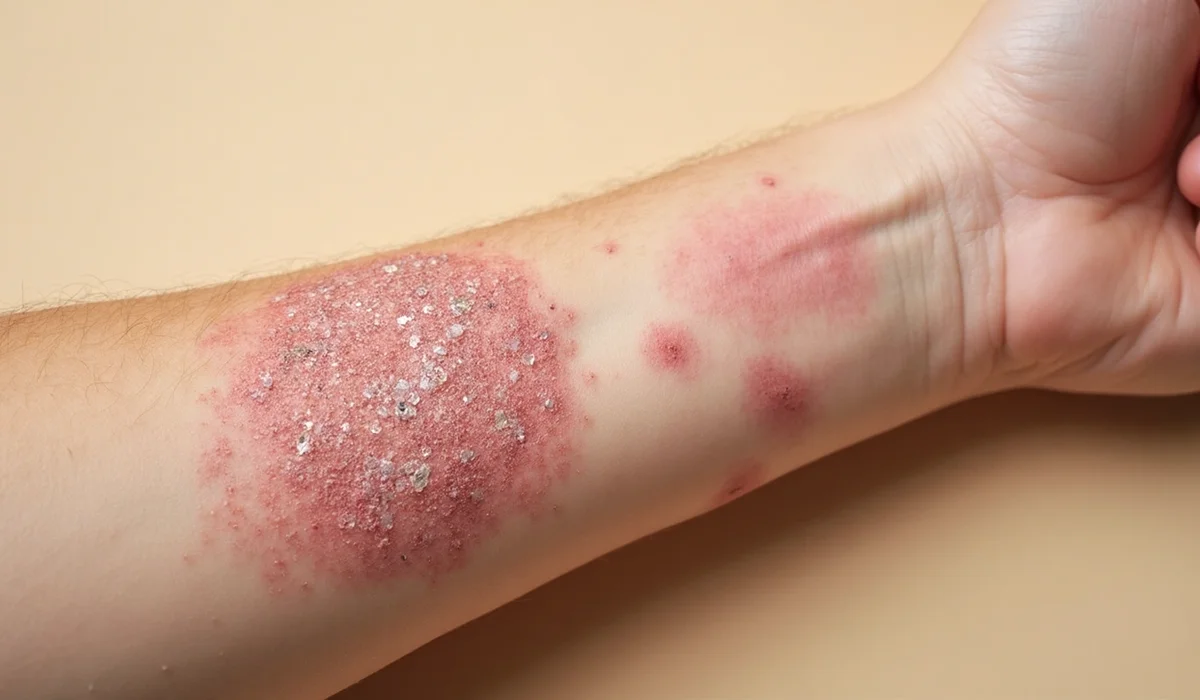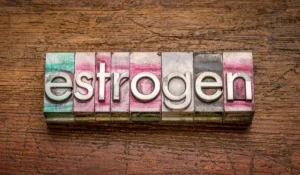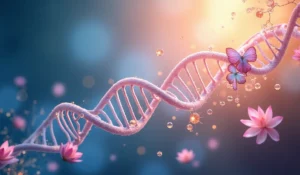Millions of people with unexpected rashes struggle to tell the difference between psoriasis and food sensitivity skin symptoms. Psoriasis affects 2-3 percent of people worldwide. The United States alone has over 8 million people living with this chronic condition. Patients often come to us confused about whether their skin problems come from an autoimmune response or their diet.
The connection between psoriasis and food allergy symptoms raises questions for many people, though research hasn’t shown direct links between these conditions. Understanding the relationship between psoriasis and food sensitivities is vital to getting the right treatment. Your body attacks healthy cells in psoriasis, which is an autoimmune disease, while food sensitivities create different immune responses. Diet plays a most important role in how our bodies manage inflammation. That’s why some patients might benefit from psoriasis food sensitivity testing. This piece will help you spot the key differences and guide you toward relief, whether you have the characteristic thick, scaly patches or reaction-based rashes.
Understanding the Basics: Psoriasis vs Food Reactions
Chronic skin conditions can puzzle healthcare providers, especially when they need to tell the difference between psoriasis and food sensitivity skin symptoms. Let’s look at these conditions and why people often mix them up.
What is psoriasis and how does it form?
Psoriasis is a chronic autoimmune skin disorder that tricks your immune system into attacking healthy skin cells. Your body creates new skin cells faster than normal – taking just 3-7 days instead of the usual 3-4 weeks. These immature cells pile up on your skin’s surface and create thick, scaly patches called plaques.
Your immune system’s T-cells should fight infections, but they attack healthy skin cells by mistake and trigger more skin cell production. This creates an endless cycle of inflammation. Scientists haven’t found the exact cause yet, but psoriasis runs in families, which points to genetic factors. Your symptoms can also flare up due to stress, skin injuries, infections, and certain medications.
What are food-related skin reactions?
Food-related skin reactions happen when your immune system overreacts to something you eat. We see two main types: food allergies and food sensitivities. Food allergies trigger an immediate immune response where your body treats food proteins like dangerous invaders. The smallest amount can cause rashes, raised bumps, hives, and itching.
Food sensitivities are nowhere near as severe and usually affect your digestion, but they can also show up as non-itchy rashes that develop slowly. The usual suspects include cow’s milk, eggs, fish, nuts, peanuts, shellfish, soy, and wheat.
Why these conditions are often confused
People mix up psoriasis and food reactions because they share similar symptoms. Both can make your skin change color, itch, and feel uncomfortable. Some foods that cause inflammation throughout your body might make psoriasis symptoms worse.
You can spot the differences in how they look and develop. Psoriasis creates dry, scaly, thick patches, while food allergy rashes are flat, smooth, and pop up minutes after exposure. Psoriasis patches stick around for weeks or months, but food reaction hives often clear up within hours.
Many people find it hard to figure out which condition they have without a doctor’s help, since both react to stress and environmental triggers.
Key Symptoms That Help You Tell Them Apart
The key to telling psoriasis and food sensitivity skin symptoms apart lies in observing their unique characteristics. My experience shows that knowing these differences helps patients get the right treatment.
Plaques vs. hives: what to look for
Psoriasis creates thick, scaly plaques that show up as raised skin areas with a silvery coating. Food-related hives (urticaria) look different – they appear as smooth, slightly raised welts that stay flat on top and can range from tiny bumps to patches as big as a grapefruit. Psoriasis plaques have clear edges, while hives show fuzzy boundaries that turn white when you press them.
Itchiness, scaling, and discoloration
Psoriasis usually causes mild to moderate itching and creates dry, cracked skin that might bleed. The scaling stands out – you’ll see thick, silvery-white scales that stick together if you try to remove them. Hives from food allergies behave differently – they cause intense itching but keep their smooth surfaces without scaling. The color varies too. Psoriasis looks red or pink on light skin and shows up as violet or dark brown on darker skin. Food reaction hives usually match your skin’s color or appear slightly darker or lighter.
How symptoms evolve over time
Time reveals a crucial difference. Psoriasis takes its time to develop and stays around for weeks or months. Food sensitivity reactions pop up fast – usually minutes after exposure – and disappear within hours or days. Psoriasis plaques shed scales throughout their lifecycle, but hive symptoms stay the same until they fade away.
Common areas affected by each condition
Psoriasis loves specific spots – elbows, knees, legs, face, palms, and feet. These plaques create matching patterns on both sides of your body. Food-related hives can show up anywhere, though they prefer the trunk, face, and limbs. These reactions don’t follow any set patterns and often move around different body areas during a single episode.
What Causes These Skin Reactions?
The mechanisms behind psoriasis and food sensitivity skin symptoms are vital to understand for treatment to work. These conditions might look alike, but they come from completely different biological processes.
Psoriasis triggers: stress, genetics, and environment
Psoriasis emerges from the interaction between your genes and environment. Research shows that 30% of patients have psoriasis running in their family. The HLA-Cw6 gene stands out as the most important genetic marker and explains up to 50% of psoriasis heritability.
Your psoriasis might flare up due to several triggers:
- Strep throat infections often lead to guttate psoriasis
- Skin damage from cuts, sunburns, or bug bites
- Weather changes, especially cold spells
- Your emotional state (31-88% of patients link their flares to stress)
- Some medications like beta-blockers and lithium
Food allergies vs food sensitivities
The immune system responds to specific proteins in food during allergic reactions. Your body mistakes these proteins for threats and triggers symptoms that range from skin reactions to breathing problems.
Food intolerances work differently. They happen because your body lacks specific enzymes needed for digestion. To name just one example, see lactose intolerance – it occurs when you don’t have enough lactase enzyme to process dairy. While intolerances rarely threaten life, they can cause uncomfortable symptoms like rashes.
Role of immune system in both conditions
T-cells in psoriasis attack healthy skin cells by mistake and create inflammation. This immune system confusion makes skin cells grow faster than normal, which leads to rapid buildup on the skin’s surface.
Food allergies also activate your immune system but through different channels. They mainly work through antibody responses that release histamine and cause immediate reactions.
Can food reactions trigger psoriasis flares?
Some foods might make psoriasis symptoms worse through inflammation. Studies point to sugar as one of the most common dietary triggers. On top of that, foods rich in arachidonic acid like red meat and eggs can produce chemicals that magnify psoriasis symptoms.
Many patients notice improvements when they stop eating nightshades such as tomatoes, potatoes, and eggplants. Recent mouse studies suggest that dietary saturated fats might increase psoriatic inflammation. Your diet affects overall inflammation levels and could influence how severe your psoriasis becomes.
Diagnosis and Treatment Options
The most important first step to address psoriasis vs food sensitivity skin symptoms is getting the right diagnosis. Both conditions need different treatment approaches that can bring relief.
How doctors diagnose psoriasis
Dermatologists diagnose psoriasis by looking at your skin, scalp, and nails. They’ll ask about your symptoms, family history, recent illnesses, medications, and any joint pain you might have. This complete assessment helps them figure out what type of psoriasis you might have and how severe it is. Sometimes, doctors might take a small skin sample (biopsy) to look at under a microscope. This helps confirm the diagnosis by ruling out other skin conditions that look similar.
Food sensitivity and allergy testing
Doctors use several ways to test for food reactions. A skin prick test shows immediate allergic responses quickly – you’ll know the results in about 20 minutes. Blood tests can measure allergic antibodies (IgE) to specific foods. The best way to know for sure is an oral food challenge. You’ll eat increasing amounts of suspected foods while doctors watch you carefully. Another option is an elimination diet. You’ll stop eating potential trigger foods for 2-3 weeks, then add them back one at a time to see how your body reacts.
Treatment for psoriasis: creams, light therapy, biologics
The treatment plan for psoriasis usually goes step by step:
- Topical treatments: Corticosteroids, vitamin D analogs, retinoids, and salicylic acid preparations
- Phototherapy: UVB narrowband, UVB broadband, or PUVA (psoralen plus UVA) treatments
- Systemic medications: Methotrexate, cyclosporine, and newer oral options
- Biologics: Injectable medications that target specific parts of your immune system
Managing food reactions: elimination and avoidance
Avoiding trigger foods is the key to managing food allergies and sensitivities. After diagnosis, you should read food labels carefully and tell anyone who cooks for you about your restrictions. People with severe allergies might need to carry an epinephrine autoinjector. Elimination diets help you find specific triggers so you can create a tailored avoidance plan without cutting out foods you don’t need to.
When to see a dermatologist or allergist
You should see a dermatologist if you have scaly patches that won’t go away, changes in your nails, or scalp issues. An allergist can help if you get hives right after eating certain foods, have trouble breathing, or digestive problems after meals. Note that dermatologists usually handle Type IV (delayed) reactions while allergists work with Type I (immediate) hypersensitivity reactions.
Conclusion
Telling psoriasis and food-related skin reactions apart can be tricky, especially when the symptoms look alike. Understanding their key differences will help you figure out what’s going on with your skin. Psoriasis shows up as thick, silvery-scaled plaques that stick around for weeks or months. Food reactions are different – they show up as smooth hives right after exposure and go away pretty quickly.
Your genes are the most important factor in developing psoriasis, but things like stress and some medications can trigger flare-ups. Food reactions work differently – they happen because your immune system reacts to specific foods you eat. These different mechanisms are why each condition needs its own treatment approach.
The way symptoms show up on your body gives away important clues. Psoriasis likes to appear on elbows, knees, and scalp in matching patterns on both sides. Food-related hives pop up randomly and move around your body during a reaction. Psoriasis’s scaly, long-lasting patches look nothing like the smooth, short-lived welts from food reactions.
Getting the right diagnosis is the foundation of good treatment. A dermatologist can give you the right medicines for psoriasis – from creams you put on your skin to advanced biologics. Allergists help find and manage what foods cause problems through tests and elimination diets. Both types of doctors are a great way to get relief, but they look at skin problems from different angles.
This knowledge helps you track your symptoms better and get the right medical help. These conditions might look similar at first, but knowing what makes each one unique helps you speak up during diagnosis. Whether you’re dealing with an autoimmune response or food sensitivity, understanding your skin’s condition is your first step to feeling better.








